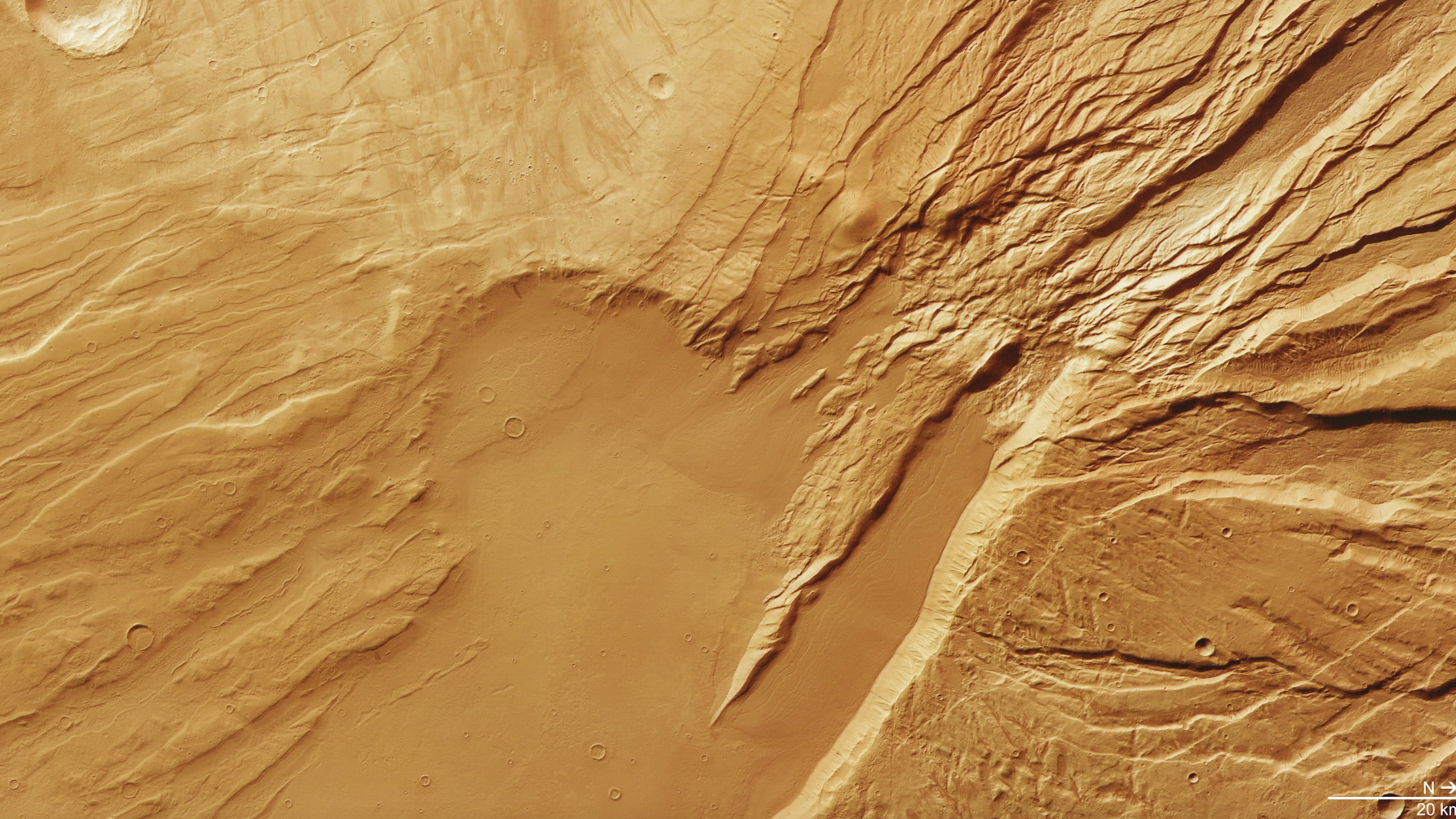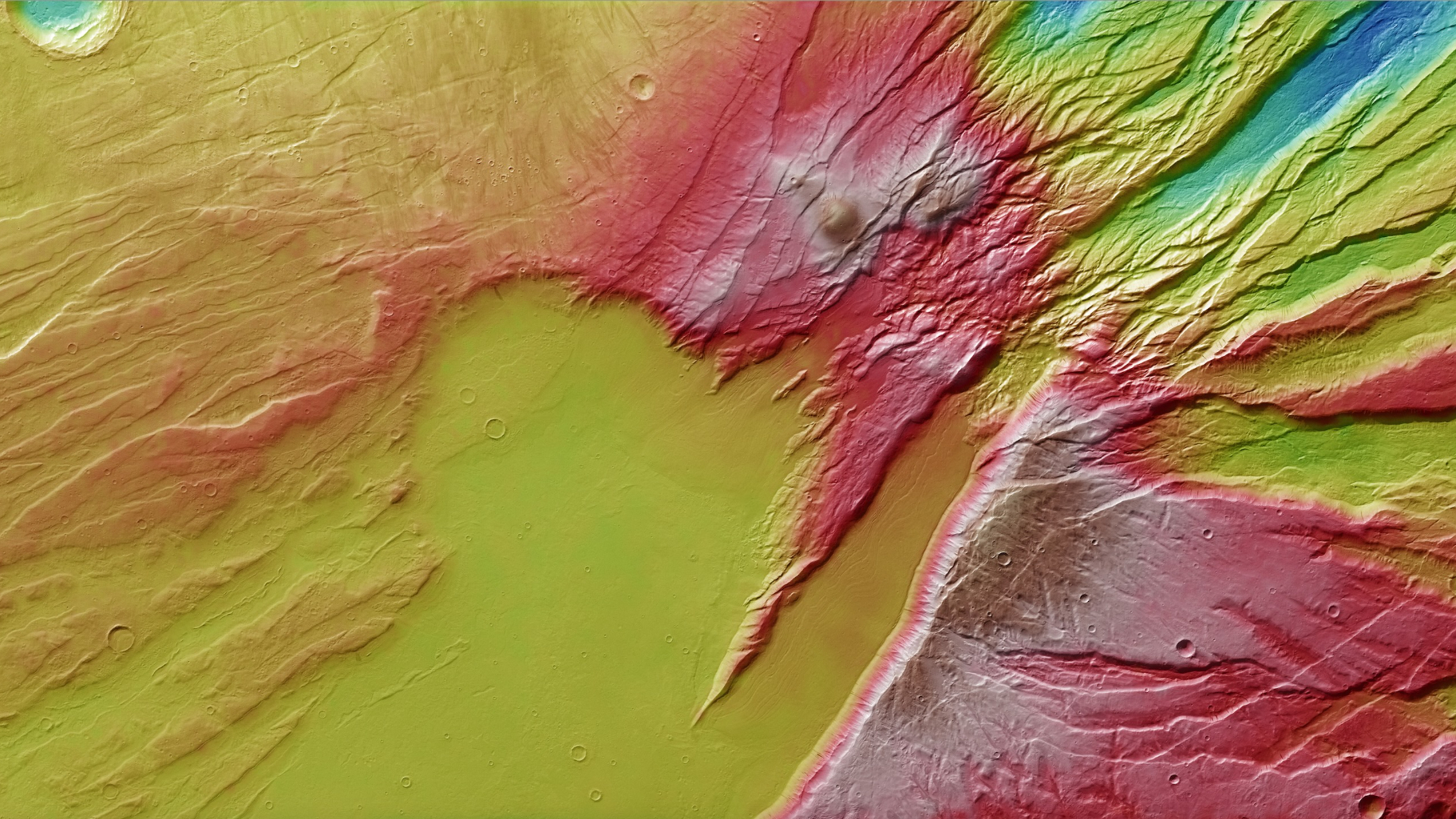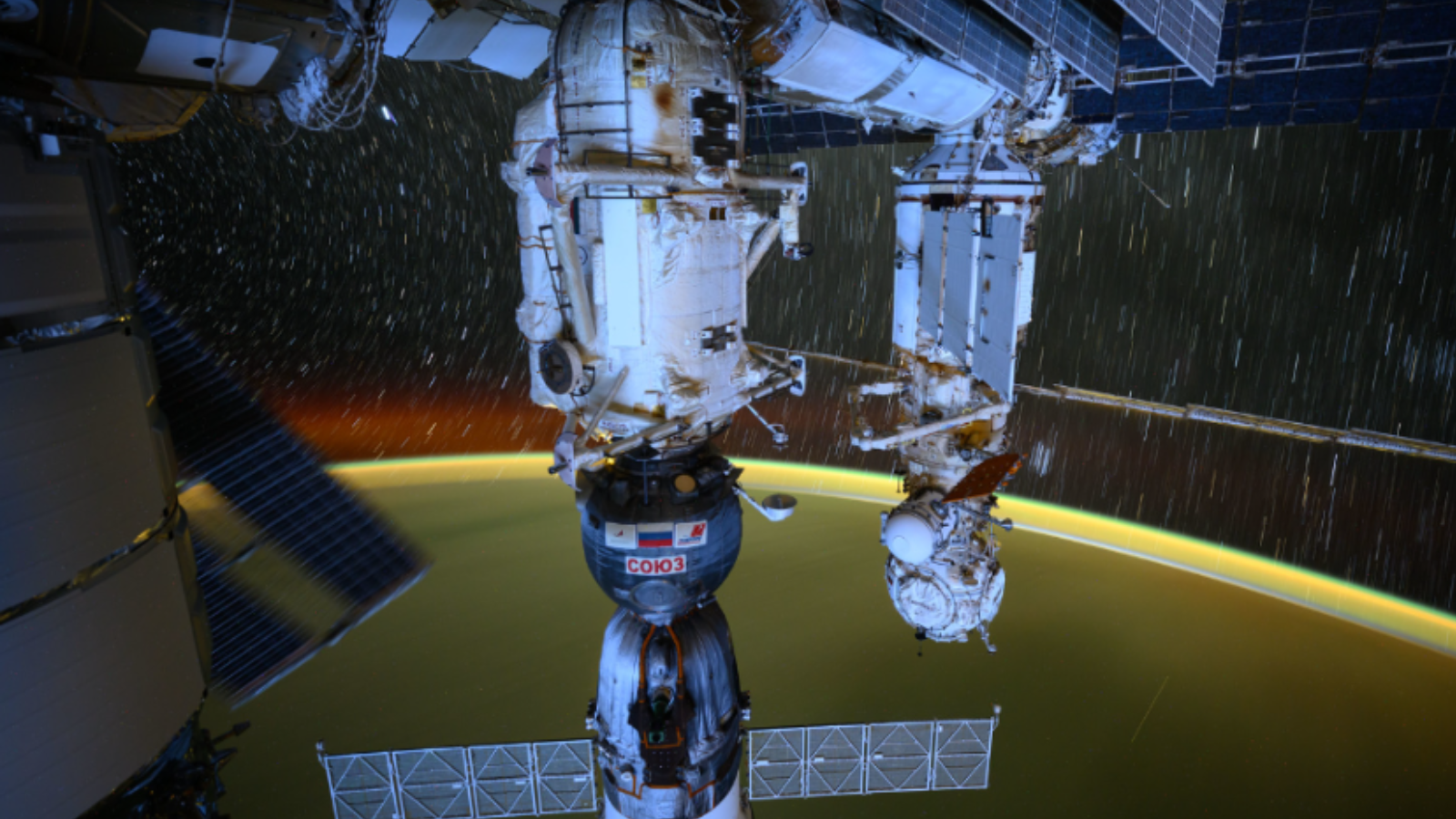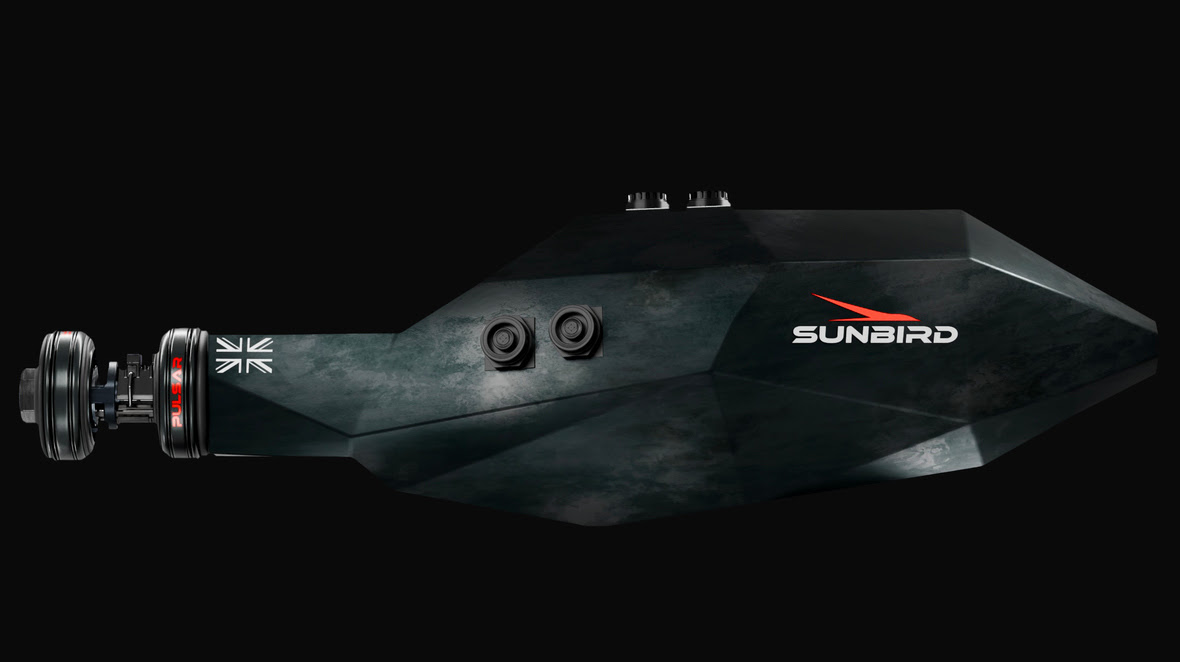New photos from European Mars orbiter show dynamic, volcanic Red Planet terrain
The snapshots detail features and topography in the Red Planet's Acheron Fossae region.

The European Space Agency (ESA) just released some new snapshots from its Mars Express orbiter that detail the dynamic terrain of the Red Planet's Acheron Fossae region.
One of the photos shows trough-like features called "grabens," which run about 500 miles (800 kilometers), or roughly the length of Germany. They were shaped from ancient volcanic activity that twisted the surface of Mars almost four billion years ago.
Flowing lava from the nearby Alba Mons volcano (not pictured) is likely responsible for the smooth region in the bottom center of the frame, ESA officials said in a statement accompanying the release of the imagery. The large half-circle in the middle is evidence of an old impact crater.

Another Mars Express image, this one color coded, reveals the topography of Acheron Fossae. The blues and purples represent lower altitudes, while the reds and whites show the region's high points.
The three conical peaks in the upper right of this second photo are several kilometers high, and they're also volcanic, ESA officials said. Grabens cutting through some of the peaks indicate that the crust there became fractured after the domes were formed.
This picture was taken by the orbiter's High Resolution Stereo Camera (HRSC), which is operated by the German Aerospace Center.
Mars Express has been sending back high-resolution photos of the Red Planet surface for more than 20 years; it launched in June 2003 and arrived on Christmas Day of that same year.
Get the Space.com Newsletter
Breaking space news, the latest updates on rocket launches, skywatching events and more!
Recently, the probe sent back pictures of the "snowy landscape" in the Australe Scopuli region near Mars' south pole. And earlier this year, data from the orbiter helped scientists find layers of clay minerals inside hills and mounds that they say could be evidence for an ancient ocean of liquid water.
ESA says that the 22-year-old Mars orbiter will continue operating at least into 2026, with the possibility of extending the mission even further.
Join our Space Forums to keep talking space on the latest missions, night sky and more! And if you have a news tip, correction or comment, let us know at: community@space.com.
Julian Dossett is a freelance writer living in Santa Fe, New Mexico. He primarily covers the rocket industry and space exploration and, in addition to science writing, contributes travel stories to New Mexico Magazine. In 2022 and 2024, his travel writing earned IRMA Awards. Previously, he worked as a staff writer at CNET. He graduated from Texas State University in San Marcos in 2011 with a B.A. in philosophy. He owns a large collection of sci-fi pulp magazines from the 1960s.
You must confirm your public display name before commenting
Please logout and then login again, you will then be prompted to enter your display name.










